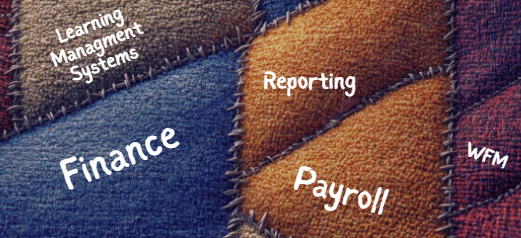From rising compliance pressures to a clear path forward:
How SMC helped a financial services leader unify processes and build a platform ready for tomorrow’s workforce.
The Client and Their Challenge
A leading financial services organisation with operations across APAC and North America had outgrown its patchwork of HR and payroll systems. Processes were inconsistent, data was fragmented, and reporting was unreliable.
As the company expanded, compliance risks grew. Manual workarounds and siloed systems slowed decision-making, while uneven digital maturity across process, technology and data limited the ability to plan for the future.
The leadership team recognised the need for a step-change. By working with SMC, the company gained a board-ready pathway to a modern HCM platform, a clear sequence to reduce compliance exposure early, and a scalable people platform that supports global growth.
Key challenges included:
- Manual, inconsistent processes across regions.
- Fragmented data and limited reporting.
- Rising compliance risks driven by growth and regulatory change.
- Lack of scalable systems to support future workforce needs.
The Solution
SMC delivered the project in two key phases:
Analyse & Blueprint (A&B)
- Mapped current and “could-be” processes across Core HR, Workforce Management (WFM) and Payroll.
- Captured over 300 business requirements to support future vendor selection.
- Developed a costed, phased transformation roadmap, balancing compliance uplift with business readiness.
Select & Negotiate (S&N)
- Ran a structured evaluation of the HCM market, including scenario-based demonstrations, references and objective scoring.
- Negotiated commercial terms across both subscription and implementation, ensuring value for money and contractual safeguards.
- Positioned the client to engage the right platform and delivery partner with confidence.
Execution and Process
SMC worked closely with client stakeholders to ensure the program was business-led, not technology-driven. Key steps included:
- Running cross-functional workshops to capture pain points and future needs.
- Designing future-state processes based on industry best practice and modern HCM capability.
- Sequencing the roadmap to deliver compliance benefits early while building a scalable HR data backbone.
- Aligning leadership on change, communication and governance.
Results and Achievements
The client gained:
- A board-ready pathway to a modern, integrated HCM platform.
- A clear sequence to reduce compliance risk and rationalise manual workarounds.
- Standardised processes that support faster decision-making and regional consistency.
- A foundation for advanced HR functions including talent, performance, learning and workforce analytics.
Measurable benefits include:
- Reduction in payroll exceptions and manual reconciliations.
- Faster onboarding, hiring and employee changes.
- Increased adoption of employee and manager self-service.
- Shift in HR Business Partner time from transactions to analytics and workforce planning.
The Future
With a roadmap in place, the organisation is positioned to implement its integrated HCM platform in phases:
- Core HR foundations: people data model, organisation structure, employee/manager self-service.
- Payroll and WFM in the largest jurisdiction first, to deliver compliance uplift early.
- Embed and optimise: adoption, controls, reporting and quick wins.
- Advanced HR: talent, performance, learning and workforce analytics at scale.
This transformation enables compliance by design, strengthens employee experience, and empowers leadership with the data and insights necessary to inform strategic workforce decisions.
FAQs
Why is payroll compliance so complex for organisations?
Firms often operate across multiple regions with different regulations. Managing this complexity with disconnected systems can be time-consuming and resource-intensive. A unified platform makes compliance easier to manage and monitor.
What are the challenges of using fragmented HR and payroll systems?
When systems don’t connect, processes become inconsistent and reporting is harder to trust. This slows decision-making and increases administrative effort. Integration brings data together in one place and supports consistent processes across regions.
How do manual processes impact HR and payroll teams?
Manual workarounds can drain time and create unnecessary steps. Automating core processes helps reduce effort, streamline tasks like onboarding and payroll, and frees HR teams to focus on strategy and workforce planning.
What steps help large organisations manage payroll and HR more effectively?
The most effective approach is to map current processes, identify opportunities to streamline, and follow a phased roadmap. This ensures improvements are delivered quickly while setting up a scalable foundation for the future.
How does an integrated HCM / HR platform support better decision-making?
With standardised processes and accurate data, leaders can access clear insights on their workforce. This enables faster, more confident decision-making and supports growth with stronger governance.

